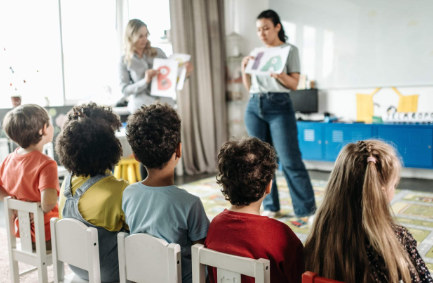
Creating a positive learning environment is crucial for fostering student engagement, motivation, and success. A well-structured, encouraging atmosphere can make a significant difference in how students perceive learning and their willingness to participate. In this post, we’ll explore practical strategies shared by a top educator on how to build and maintain a positive learning environment that nurtures growth, creativity, and a love for learning.
1. Cultivate a Welcoming Atmosphere
The foundation of a positive learning environment starts with a welcoming atmosphere. Greet each student by name, show genuine interest in their well-being, and create an inclusive classroom where every student feels valued. Display bright and engaging materials that stimulate curiosity and foster a sense of belonging.
2. Set Clear Expectations
Clearly defined expectations create a sense of structure and help students understand what is required of them. Collaborate with students to establish classroom rules and routines. This approach encourages accountability and helps maintain a respectful and productive learning space.
3. Encourage Open Communication
An effective educator promotes open communication. Encourage students to express their thoughts and questions freely. Implement practices like “question corners” or “reflection time” to ensure that students feel safe to share their perspectives and experiences. A classroom where open dialogue is welcomed fosters trust and mutual respect.
4. Incorporate Active Learning Strategies
Active learning strategies, such as group discussions, interactive projects, and hands-on activities, can significantly enhance engagement. When students are actively involved in their learning process, they are more likely to retain information and develop critical thinking skills.
5. Provide Constructive Feedback
Constructive feedback is essential for student growth. Instead of focusing solely on mistakes, highlight their efforts and accomplishments. Provide specific guidance on how to improve, and celebrate progress. Positive reinforcement can motivate students to strive for excellence.
6. Foster a Growth Mindset
Promote a growth mindset by encouraging students to view challenges as opportunities for learning. Use phrases like “I can see you’re working hard” or “Mistakes are a part of learning” to help students understand that effort and persistence are keys to success. A growth mindset fosters resilience and a positive attitude toward learning.
7. Incorporate Technology Thoughtfully
Leverage educational technology to make learning more dynamic and interactive. Use digital tools and resources to enhance lessons, engage students in new ways, and cater to different learning styles. Ensure that technology is used to supplement, not replace, traditional teaching methods.
8. Create a Safe and Supportive Space
A positive learning environment is safe physically, emotionally, and mentally. Address bullying and negative behaviors promptly, and create support systems for students who need extra help. Provide a space where students feel safe to take risks and make mistakes.
9. Celebrate Diversity
Embrace and celebrate the diverse backgrounds, cultures, and abilities of your students. Integrate multicultural content into your lessons and recognize various cultural celebrations. This fosters an inclusive environment where every student feels seen and appreciated.
10. Foster Collaboration and Teamwork
Encourage teamwork through group activities and projects. Working collaboratively helps students build social skills, learn from their peers, and appreciate different viewpoints. Teamwork fosters a sense of community and collective achievement.
11. Make Learning Fun
Inject fun into your lessons with games, stories, humor, and creative activities. A playful environment enhances student engagement and helps them develop a love for learning. Remember, a classroom that feels more like a community is one where students are eager to participate.
12. Promote Self-Reflection and Autonomy
Encourage students to reflect on their learning journey and set personal goals. Allow them to take ownership of their education by providing choices in their assignments and activities. Promoting self-reflection and autonomy helps students become independent learners.
Conclusion: Nurturing a Positive Learning Environment
Fostering a positive learning environment requires intentional actions and a commitment to nurturing every student’s growth and potential. By cultivating a welcoming atmosphere, setting clear expectations, encouraging open communication, and celebrating diversity, educators can create a space where students thrive.
Did you find these insights helpful? Don’t miss out on more valuable tips and resources! Subscribe to our blog and be the first to receive updates on how to enhance learning experiences for your students.
Share your thoughts in the comments section!










